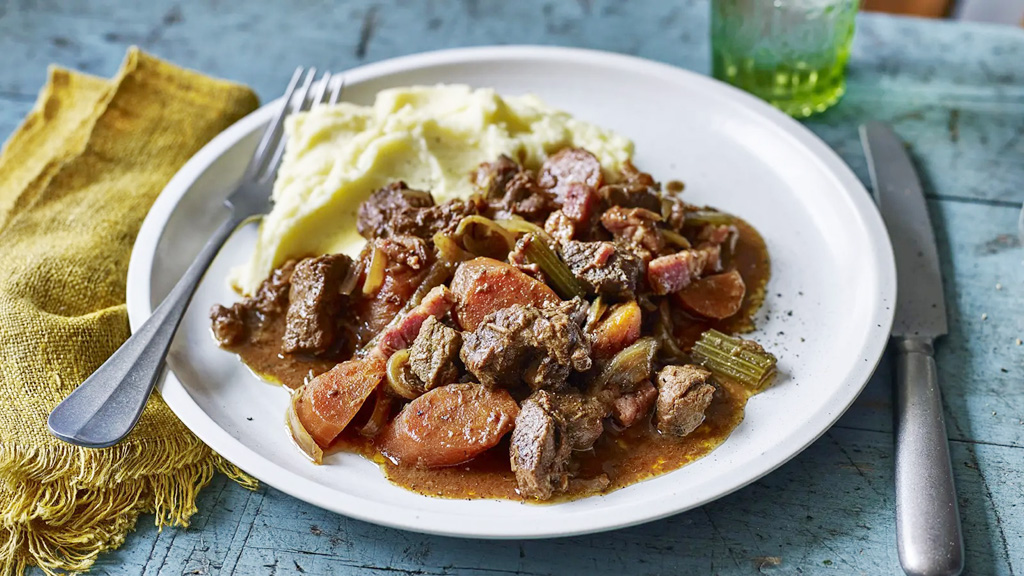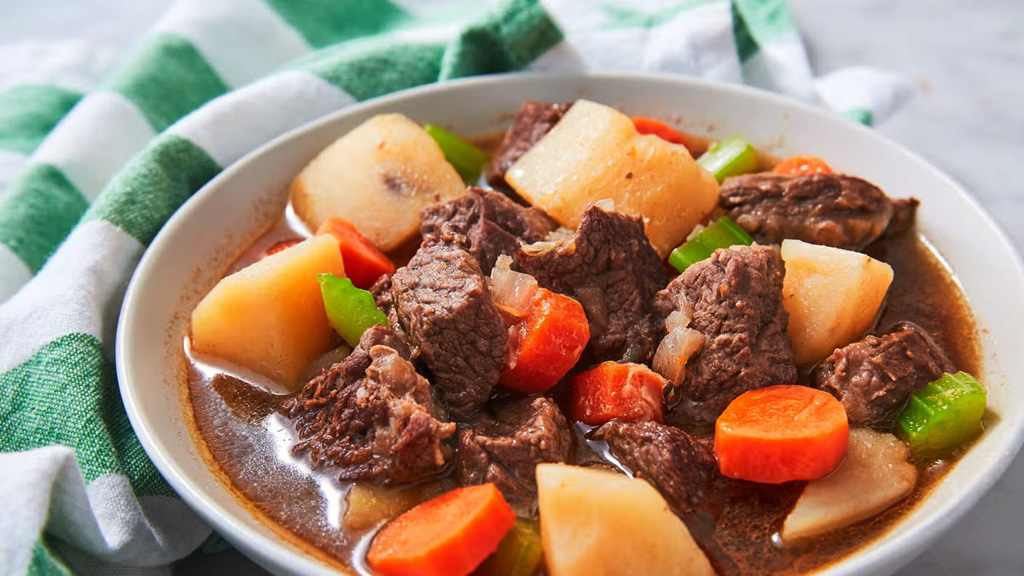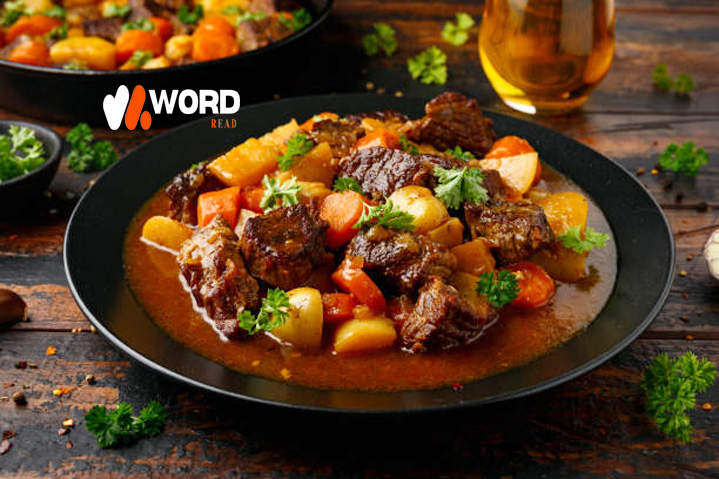Beef stew
Beef stew is a popular dish in many cultures worldwide. It has been a favourite in homes due to its flavorful, soft meat and nutritious components for ages. This blog examines the history, attraction, and health advantages of beef stew as well as the several cooking methods.
Origin and popularity of Beef stew
Beef stew has a rich history dating back to early human civilizations, where slow cooking was used to soften the hard meat pieces. The development of distinct spices, veggies, and cooking methods contributed to the creation of several cultural variations of beef stew.

The French dish “Boeuf Bourguignon” is one of the most well-known stews in Europe. It is made with red wine, onions, and mushrooms. Irish Stew is typically cooked with meat or lamb, potatoes, and root vegetables which is found in the Irish version. “Goulash” is a spicy beef stew in Hungary that is paprika-seasoned.
Stews include unique regional spices and ingredients from every corner of Asia, including coconut milk in Thai versions or soy sauce in Chinese-style stews. It is still a favourite food around the world today because of its filling and pleasant characteristics. It is often made as a luxurious dish for important occasions, family gatherings, and even dining establishments.

Different ways to cook Beef stew
Stew can be made in a variety of ways, each of which enhances the flavours and textures of the dish. Here are a few of the most widely used cooking methods.
- Traditional stovetop Beef stew
The traditional stovetop approach is browning slices of beef, frying veggies, and then cooking everything for a few hours over low heat in broth or wine. This method of slow cooking makes the meat soft and allows flavours to combine.

- Slow Cooker Beef Stew
It’s simple to prepare stew in a slow cooker. It is often known as a crockpot. Firstly, Combine the ingredients and cook them on low heat for 6 to 8 hours. It makes a great hands-off cooking method. The beef is extremely delicate and has tastes that are deeply connected because of the longer cooking time.

- Pressure Cooker Beef Stew or Instant Pot
The use of a pressure cooker or Instant Pot may significantly cut down on cooking time without sacrificing the flavour of a stew. It makes beef ideal for people with very little time. This method frequently produces the dish in less than an hour and uses high pressure to swiftly transform the beef.

- Oven-Baked Beef Stew
Oven-braising is a method of cooking stew slowly at a low temperature (around 325°F or 160°C) in a covered pot. This method works best for producing a more consistent and fork-tender texture. It also enhances its tastes.

Regional and Global Differences
A stew cooked with herbs, onions, and mushrooms in red wine. A stew cooked with bell peppers, potatoes, and paprika. Short ribs, soya sauce, and garlic are combined to make this Korean-style roasted beef stew. It is served with tortillas and a savoury meat stew flavoured with chilli peppers. Soya sauce and mirin are used to flavour this light and sweet beef with potatoes and carrots.
Health benefits of Beef Stew
Beef has several nutritional advantages in addition to being delicious, especially when made with healthful components. Protein is necessary for both muscle growth and repair. Beef is rich in protein. Beef stew is a satisfying meal since protein helps in digestion.

The important minerals like iron, zinc, and B vitamins are also found in beef. B vitamins promote the development of energy. Zinc strengthens the immune system. Iron is essential for the blood’s ability to carry oxygen.
Carrots, potatoes, onions, and tomatoes are among the vegetables that give beef stew fibre, vitamins, and antioxidants. These minerals promote heart health, immunity, and digestion. Saturated fat levels can be decreased by using low-fat meat cuts for a more nutritious option.
The extra whole grains, vegetables, and low-sodium broth improves the nutritional level of the dish. It is also made healthier by utilizing other thickening agents, including blended vegetables, for flour or cornstarch.



